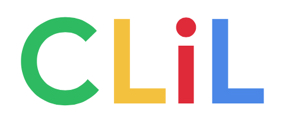
Learning Objects
The Education of Children in the Thinking of the First Pedagogues
by Sara Carpio
First pedagogues
Comenius: defended the importance of the power of education to improve man and society. Education should be universal, have order and method, be enjoyable. The student should be the center of attention. For Comenius, teaching is due to a disposition of three things: time, object and method. He provided educational ideas based on three methods: understanding, retaining and practicing. The purpose of this was to improve teaching for the student. He was inclined to the teacher's ability to be sensitive to the student, as well as to the interaction and thus ensure the success of learning.
Rousseau conceives the education like the man chained in Emilio, or of education. Like in Discourse on the origin and the foundations of the inequality between the men wants to separate the formation of the man in Emilio Rousseau creates a system of education that leaves the man, or in this case the child, that lives and develops in a society Corrupt and oppressed. As Emilio's preliminary study says: "Give children more freedom and less empire, let them do more for themselves and demand less from others
Pestalozzi: indicated that only education could be carried out according to a law (harmony with Nature). From this principle derives the need for freedom in the education of the child; He must be free, so that he can act in his way in contact with everything that surrounds him (environment)
- Elementary Education: It should be based on the observation of experiences, interests and educational activities; Of teaching nothing that the children could not see (an idea taken from Rousseau) and considered that the main purpose of teaching was not to make the child acquire knowledge and skills, but to develop the forces of his intelligence, dividing that into form Gradual, according to its evolution and where the individual is considered as a unit of intelligence, sentiment and morality. He maintained that any irregularity in these characteristics, leads to the nullity of a comprehensive education.
- Physical education: It also included physical education as a means of strength and endurance, thus closing the cycle of a comprehensive education, ranging from the most spiritual to the purely corporeal.
Current pedagogues
Agazzi: Rosa and Carolina Agazzi were two Italian pedagogues born in Volongo, in the province of Verona. They worked in the field of early childhood education (up to 6 years of age).
His method is based on scrupulously respecting the freedom, spontaneity of the child through his independent work and the presentation of content through play activities. Unlike the Montessori method and in keeping with the humble origins of children attending to the materials they use for their jobs are often scrap.
They are fundamental areas in your system:
- Sensory education: it is developed by ordering by colours, materials and forms of objects.
- Intellectual instruction: it is based on the exploration of the world and the natural perception of concepts.
- Education of feeling: against l
- To aggressiveness. It is developed practicing religion, physical education and education
Decroly: It is a teaching method devised by Ovide Decroly. It is sustained that the discovery of the child's needs allows him to know his interests, which will attract and keep his attention and thus, it will be the child himself who seeks knowledge. Phrase that synthesizes the purpose of the Decroly method
It encourages the active observation of the environment as a method to be followed, as well as the elimination of a fixed schedule and the cyclical teaching for the centres of interest, so that in each course notions of the different subjects are developed.
It highlights that suggests that a maximum ratio of twenty students per classroom and that are as homogeneous as possible. In addition, for Decroly the school must be active, it should allow the child to experience their tendencies to restlessness and play.
Montessori: The Montessori Method is an educational method devised by the Italian educator and physician Maria Montessori in the late nineteenth and early twentieth centuries, which was based on extensive research on children with mental disorders and special needs. It is characterized by developing in the child independence, freedom with limits, respect the natural psychology and the physical and social development of the child. His book The Montessori Method was published in 1912.
This educational method is characterized by emphasizing the activity directed by the child and clinical observation by the teacher. This observation is intended to adapt the child's learning environment to the level of development. The basic purpose of this method is to unlock each child's potential for self-development in a structured environment.
© Copyleft 2016, Content and Language Integrated Learning and ICT Group
